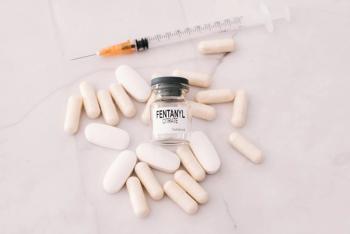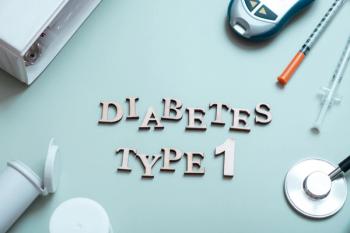Telehealth has the potential to both reduce and increase stigma at the individual, public, and structural levels, in patients with opioid use disorder (OUD), according to results of a study published in the Harm Reduction Journal.1 Study results suggest the best approach to OUD treatment might instead be individualized approaches that allow patients to choose between in-person and telehealth appointments.
In-person restrictions during the COVID-19 pandemic led to changes in OUD treatment regulations and policies, including the adoption of telehealth for buprenorphine treatment initiation and continuation. Although some research suggests telehealth might reduce the stigma patients often face when seeking care, its full impact is unclear. The current study aimed to explore this relationship in depth.
- Telehealth has the potential to improve and exacerbate stigmatic experiences in patients with OUD.
- Based on study findings, patients should have the option to choose between in-person and telehealth appointments based on their comfort level and needs.
- Telehealth can unintentionally perpetuate stigma. The study highlights the need for clinician training on reducing stigma in telehealth settings.
Investigators recruited participants from different treatment settings at a large urban academic medical center in Portland, Oregon. These settings included a low-barrier telehealth-only SUD disorder clinic, an SUD specialty consult clinic within a primary care clinic, and 6 primary care clinics that treat individuals with OUD.
Participants were eligible for recruitment if they were between 18 and 89 years of age, identified as having at least 1 telehealth visit for OUD with at least 1 clinic site, and a prescription for any formulation of buprenorphine for OUD treatment.
The study interviewed 30 participants by phone between October 2022 and February 2023. Interviews were recorded and semi-structured, and later transcribed and qualitatively analyzed. The majority of patients (77%) were White, 13% were American Indian or Alaska Native, 17% were Black or African American, and 17% were Hispanic or Latinx. Nine participants experienced homelessness in the 6 months prior to participation.
Investigators gleaned 4 themes associated with the perceptions of and experiences with stigma and telehealth categorized by 3 levels of stigma: individual, or stigma that is internalized; public, or stigma generated from the community and health care professionals; and structural, or stigma that underpins discriminatory clinical and institutional policies.
READ MORE: On the Front Lines: Pharmacists' Role in Combating America's Opioid Epidemic
The first theme was linked to individualized stigma. Interviews revealed that the physical and emotional distance from the clinic created by telehealth mitigated shame, guilt, and anxiety about receiving OUD treatment in-person.
“[When seeking care in person,] you feel like you’re being watched or judged by everyone, and telehealth can reduce that sense whether it’s real or perceived,” said Ximena Levander, MD, senior author and assistant professor of medicine in the Oregon Health & Science University, in a news release.2
Additionally, participants felt that telehealth offered improved agency over their health and treatment. “Telemedicine…it’s not as interpersonal,” said 1 participant. “You’re just a click away from no longer having the interaction and you feel you have more control.”
The second and third themes were linked to public stigma. Although telehealth helped some participants avoid the anxiety associated with visiting a clinic altogether, others expressed privacy concerns about using telehealth at home due to potential overhearing by family, friends, or roommates. This was especially true for those who lacked stable housing or lived in close quarters with others.
Moreover, some participants found it difficult to gauge their clinician’s perceptions of them over telehealth, leading them to perceive a lack of empathy or trust. One participant described their experience: “[After switching to telehealth, my clinician] kept taking away my medications, not talking to me, and then like not doing anything the same way he’s always done it. I’m frustrated and angry and not feeling heard. When I go into the office, it’s like, ‘Oh there I am; I’ve showed up.’ It is a feeling like when I only take it on the phone, am I not putting in enough work?”
On the other hand, some participants—particularly those with negative health care experiences—felt shielded from witnessing potentially discriminatory behavior from clinicians. This suggests telehealth might be beneficial for individuals who have faced previous bias.
The final theme was linked to structural stigma. Many participants, particularly those attending in-person methadone treatment centers, highlighted the burden of clinic procedures and lack of sympathy expressed by staff. This environment contributed to feelings of being “a bad person,” “a criminal,” or “less than.” They contrasted this with telehealth experiences, where the perceived flexibility and focus on remote guidance fostered a sense of trust and respect from clinicians.
These findings lend important insights and could promote engagement with treatment within the current opioid crisis in the United States, at the hands of which hundreds of thousands of lives are lost each year. A recent JAMA Health Forum survey found that over 30% of adults know someone who has died from a drug overdose.3
“Our results support a more individualized approach to care, whereby patients may choose whether they receive care in person or via telehealth,” wrote investigators. “Given that aspects of both telehealth and in-person treatment left some participants feeling judged by their clinicians, our findings also highlight the need to further explore how clinicians perpetuate stigma through telehealth-based programs, and how training and clinical guidelines could mediate this.”
READ MORE: Substance Use Disorder Resource Center
Don’t get left behind: Sign up today for our free Drug Topics newsletter and get the latest drug information, industry trends, and patient care tips delivered straight to your inbox.
References
1. Couch JV, Whitcomb M, Buchheit BM, et al. Patient perceptions of and experiences with stigma using telehealth for opioid use disorder treatment: a qualitative analysis. Harm Reduct J. 2024;21(1):125. doi:10.1186/s12954-024-01043-5
2. Study: Telehealth builds autonomy, trust in treating addiction. News release. EurekAlert. July 8, 2024. Accessed July 9, 2024. https://www.eurekalert.org/news-releases/1050675
3. Kennedy-Hendricks A, Ettman CK, Gollust SE, et al. Experience of personal loss due to drug overdose among US adults. JAMA Health Forum. 2024;5(5):e241262. doi:10.1001/jamahealthforum.2024.1262






















































































































































